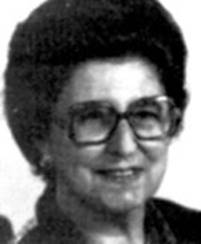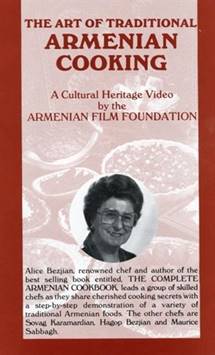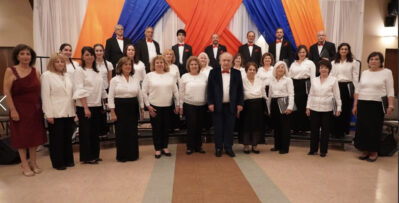ENCINO — The Armenian Film Foundation was established in 1979 as a non-profit, educational and cultural organization dedicated to the documentation and preservation of Armenian heritage in multimedia formats. Its primary aim “continues to be to inspire pride in, and world-wide recognition of, the Armenian people and their contributions to society, thereby fostering human dignity and enhancing understanding and goodwill between present and future generations of Armenians and other cultures.”
One of the Armenian Film Foundation’s Cultural Heritage Videos showcases The Art of Traditional Armenian Cooking by renowned chef and author Alice Bezjian. Author of the bestselling The Complete Armenian Cookbook (published in 1987), Mrs. Bezjian, who passed away in 2003, shares her cherished cooking secrets with a step-by-step demonstration of traditional Armenian foods. The 280+ pages of her cookbook includes family recipes spanning back 70-80 years, along with her own favorites from family and friends for over 40 years. In the video, her recipes include selections from hors d’oeuvres to main dishes, breads, and desserts. Chefs Zov Karamardian, Hagop Bezjian and Maurice Sabbagh also share step-by-step demonstrations of their recipes (http://www.armenianfilm.org/drupal/films/art-of-traditional-armenian-cookin).

Mrs. Alice Bezjian was born in Cairo, Egypt of Armenian parents. “The family moved to Asia Minor for a short time and later to Syria, finally settling down in Beirut, Lebanon. At an early age, Mrs. Bezjian was introduced to the joy of cooking by her maternal grandfather. He was a widely traveled man, who had been around the world at a time when traveling was neither easy nor fashionable. He used to bring new recipes from faraway places and cook large dinners for the whole family. He often said that cooking was fun, but the greatest pleasure was sharing one’s creative dishes with appreciative friends.”
In Beirut, Mrs. Bezjian took cooking lessons from the best known chefs in the country. Later, she gave cooking lessons and taught her students how to cook and present food in creative and appetizing ways. In 1964, she moved to Los Angeles with her family, where she and her husband started a gourmet delicatessen store. The store was extremely successful, and became a landmark for many gourmet cooks and food lovers. Mrs. Bezjian was always at her store, graciously dispensing recipes and culinary expertise with her customers. Sunset Magazine and New West wrote articles about the store, and her recipes were published in those magazines. She also went to the store frequently to see her old customers and exchange ideas and recipes before she passed away (http://www.abrilbooks.com/alice-bezjian).
Ma’amoul (also spelled m’aamoul, m’amul, m’aamul) is an Arabic filled butter cookie made with semolina flour. The filling can be made with dried fruits like figs or dates or nuts such as pistachios, walnuts, and occasionally almonds. Ma’amoul is usually made during the Easter holiday, and a few days before Eid (then stored to be served with strong Arabic coffee and chocolate to guests who come during the holiday). The Mizrahi Jewish version of ma’amoul differs from the Levantine or Turkish versions by being made with pure white flour and no semolina, today this variation is eaten in Syrian and Egyptian Jewish communities in Israel and the Diaspora.









